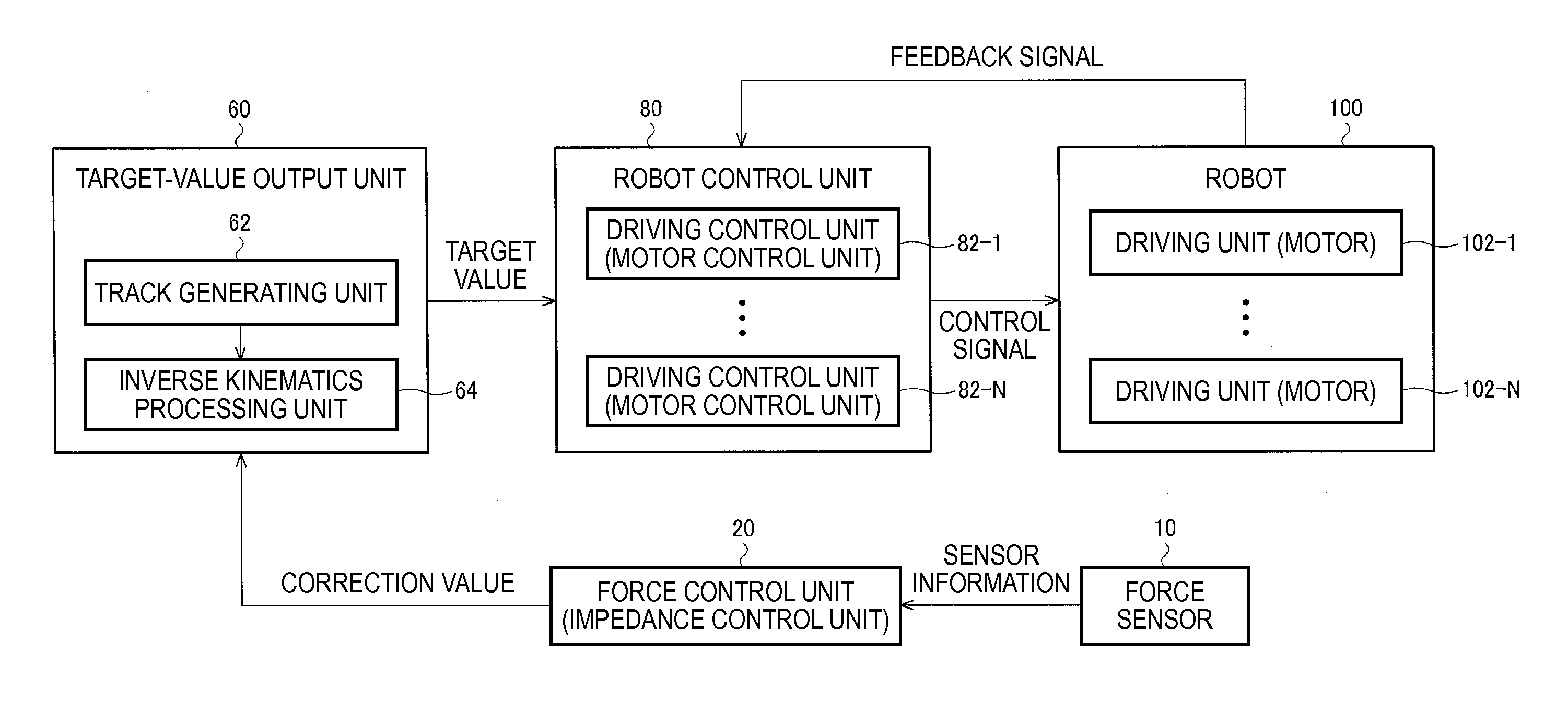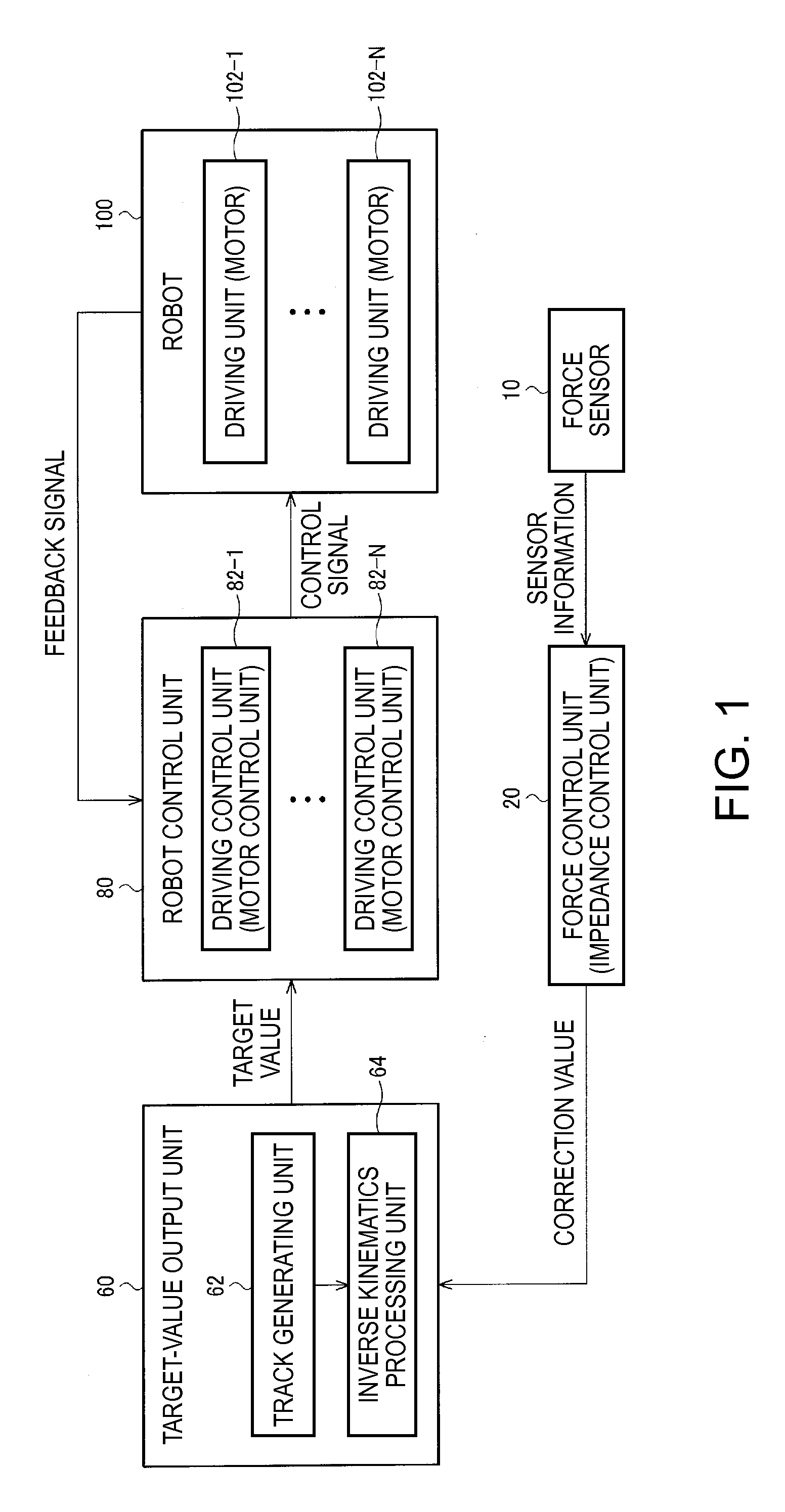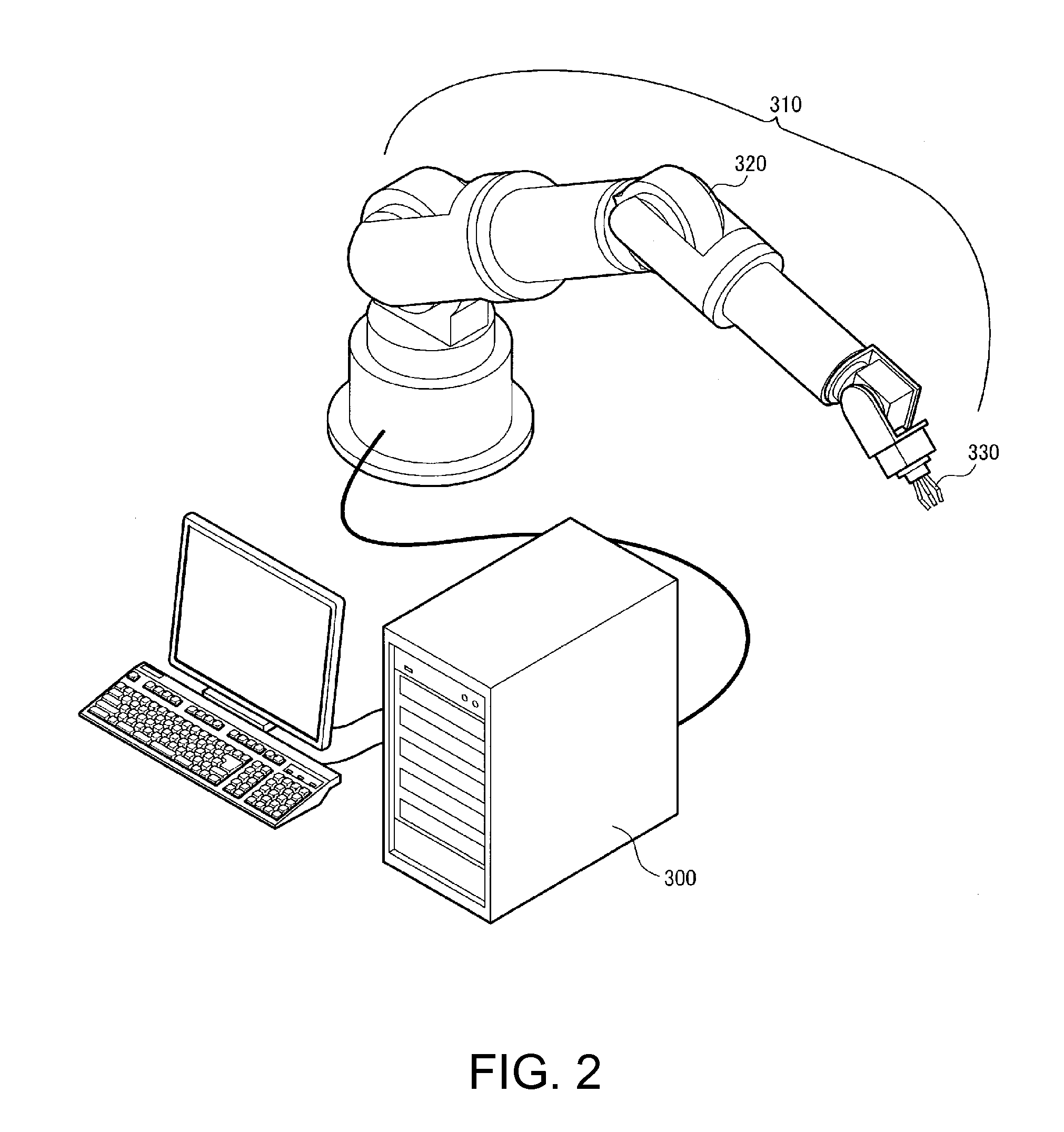Robot control system, robot system, and sensor information processing apparatus
- Summary
- Abstract
- Description
- Claims
- Application Information
AI Technical Summary
Benefits of technology
Problems solved by technology
Method used
Image
Examples
first embodiment
2. First Embodiment
2.1 Configuration
[0111]A configuration example of a robot system including a robot control system according to the first embodiment is shown in FIG. 11.
[0112]Since the force sensor 10, the track generating unit 62, the inverse kinematics processing unit 64, the motor control unit 82-1, and the like are the same as those shown in FIG. 1. Therefore, detailed explanation thereof is omitted. An input correcting unit 30 applies correction processing to sensor information. For example, the input correcting unit 30 may include, for example, the posture correcting unit 532 and the hand-tool-own-weight correcting unit 534 shown in FIG. 7. A forward kinematics processing unit 40 corresponds to the forward kinematics processing unit 540 shown in FIG. 7. The forward kinematics processing unit 40 outputs a result of forward kinematics processing to the input correcting unit 30 and outputs the result to the track generating unit 62 as well according to necessity.
[0113]The robot...
second embodiment
3. Second Embodiment
[0146]In a second embodiment, it is assumed that a driving frequency of a digital filter is switched. For example, it is conceivable to switch the driving frequency according to band limitation. In general, noise is often included in sensor information of a force sensor. Therefore, it is desirable to perform band limiting processing. However, the width of a pass band varies depending on a situation (if a large signal value is obtained with respect to noise, the band limiting processing may be rather light and the pass band can be set wide). As the pass band is set narrower, the noise further decreases but a response characteristic is further deteriorated. Therefore, it is necessary to switch the driving frequency of the digital filter as well to correspond to the pass band. Specifically, when the pass band is set wide, the digital filter is caused to operate at a high driving frequency and, when the pass band is set narrow, the digital filter is caused to operate...
third embodiment
4. Third Embodiment
[0167]In a third embodiment, as in the second embodiment, it is assumed that a driving frequency of a digital filter is switched. In this embodiment, a configuration including only one digital filter arithmetic unit 221 that performs digital filter processing is explained. When only one digital filter arithmetic unit 221 is provided, it is necessary to perform switching processing when the driving frequency is switched. Specifically, as the switching processing, switching from a high frequency to a low frequency and switching from a low frequency to a high frequency are separately explained.
4.1 Configuration
[0168]A configuration example of a robot system including a robot control system according to the third embodiment is shown in FIG. 15. Detailed explanation of components same as those in the second embodiment (FIG. 13) is omitted. When compared with the second embodiment, the third embodiment is different in that only one digital filter arithmetic unit 221 is ...
PUM
 Login to View More
Login to View More Abstract
Description
Claims
Application Information
 Login to View More
Login to View More - R&D
- Intellectual Property
- Life Sciences
- Materials
- Tech Scout
- Unparalleled Data Quality
- Higher Quality Content
- 60% Fewer Hallucinations
Browse by: Latest US Patents, China's latest patents, Technical Efficacy Thesaurus, Application Domain, Technology Topic, Popular Technical Reports.
© 2025 PatSnap. All rights reserved.Legal|Privacy policy|Modern Slavery Act Transparency Statement|Sitemap|About US| Contact US: help@patsnap.com



